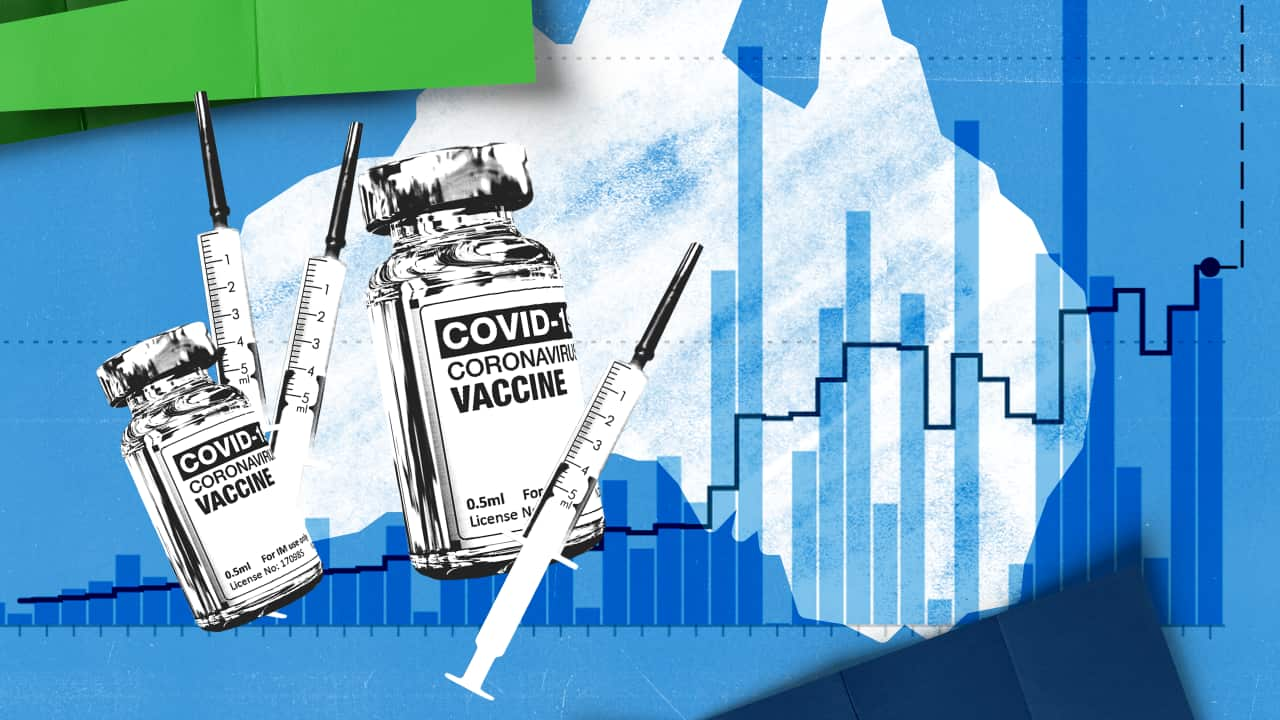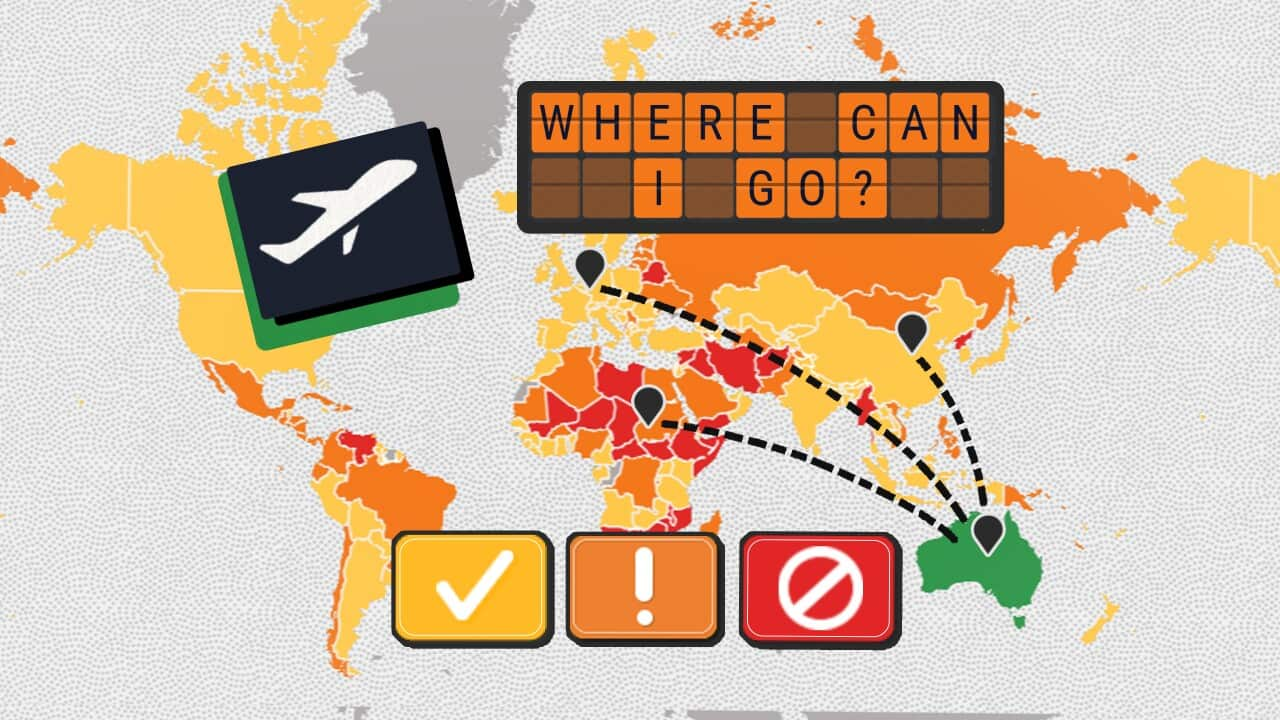

5 min read
This article is more than 2 years old
Interactive
How each country's COVID-19 booster rate is exposing inequality across the world
While millions of Australians have rolled up their sleeves after becoming eligible for a booster, a number of countries still have double vaccination rates of less than one per cent. Explore the graphics below to see the divide between high and low-income countries.
Published 9 March 2022 7:11am
Updated 9 March 2022 7:43am
Source: SBS News
COVID-19 boosters have been rolled out in many countries across the world, including in Australia.
As of March 2022, more than 11 million people in Australia had received more than two vaccinations, accounting for more than 63 per cent of those eligible.
But there remains hundreds of millions of people in lower-income countries that haven’t received a second, or even a first, dose.
Which countries are the furthest ahead?
According to Our World in Data, as of March 2022, Chile (75 per cent boosted), Singapore (67 per cent) Denmark and Italy (both 62 per cent), have the highest third jab rates of countries with more than two million residents. All are defined as high-income.
In terms of double vaccinations, the United Arab Emirates (95 per cent), Portugal (92 per cent) and Singapore (90 per cent) had the highest levels of coverage.
Which countries are the furthest behind?
With the exception of Haiti, Papua New Guinea and Yemen, the 20 countries with the lowest percentage of double vaccinated citizens are currently all in Africa.
Burundi, the Democratic Republic of Congo and Chad have fewer than one per cent of residents double jabbed.
As of March 2022, 86 per cent of people living in countries the World Bank classifies as low-income were yet to receive one dose of a vaccine. No low-income countries have as yet received booster shots.
That’s compared to 19 per cent of people living in high-income countries being unvaccinated, and 39 per cent who have received a booster.
Health experts say the data highlights vast inequality and points to a link between a country's level of income and its rate of vaccination coverage.
Some have also blamed the emergence of new COVID-19 variants and their spread, in part, on richer countries stockpiling vaccines and .
"As long as we have this deep vaccine inequity, we will have a pandemic," says Brendan Crabb, director of Australian medical research institute the Burnet Institute.
"To end it, we actually have to end it for all of us. We can't leave any country behind."
Professor Crabb says wealthy countries have a huge amount of control over COVID-19 vaccines, and so it's no surprise they have higher vaccination rates.
“Rich countries make the vaccines, they own intellectual property relating to those vaccines, they’re also quite expensive as a general rule, and for a while, there's been limited supply.
"But when wealthy countries have so much control over the world vaccine supply, for them to be not providing it to everybody when that's the answer to their own problems, it's quite remarkable.”
Professor Crabb says vaccine hoarding by rich countries has had a devastating trickle-down effect.
“That's placed 80-odd countries in the world with less than 40 per cent double dose coverage, and 30 countries in the world with less than 10 per cent vaccine coverage, a lot of them in Africa.
“A third of the world's population has not even had a single dose of a vaccine – that’s not only terrible for them, but it’s an own goal for everybody.”
What is being done to combat vaccine inequality?
Wealthy countries, including Australia, have pledged to donate or supply lower-income countries with COVID-19 vaccines.
Australia has pledged to donate 60 million COVID-19 vaccine doses to developing nations in the Pacific by the end of 2022, which is part of a Quad vaccine partnership initiative to donate 1.3 billion doses globally.
And while COVAX - the worldwide initiative aimed at equitable access to vaccines - delivered its one billionth dose last month, it fell far short of its initial objective of delivering two billion doses by the end of 2021.
Australia has pledged $130 million to COVAX, which the Department of Foreign Affairs and Trade says will help boost vaccine access in 92 developing nations. COVAX anticipates having approximately 2.8 billion doses available by mid-2022, which DFAT says would be enough to help those 92 countries achieve 45 per cent double vaccination coverage.
Professor Crabb says it’s crucial the world puts vaccine inequality “on the agenda” in 2022.
“It's not just about procuring the vaccines and shipping them to countries. There has to be a health system strong enough to deliver them.
“It’s urgent we also ramp up what COVAX can do for the developing world. It's working in the Asia-Pacific, and it's working very much for Africa, where vaccine rates all across the entire continent are very, very low.
“We want to make sure we’re not here in a year's time talking about why we have a new variant or why COVID is still on the radar. The reason will be because we didn't face up to the fact we needed to deliver vaccines to everybody and not just ourselves.”
Interactive by Ken Macleod. Graphics by Jono Delbridge and Karin Zhou-Zheng. Additional reporting by Evan Young.






